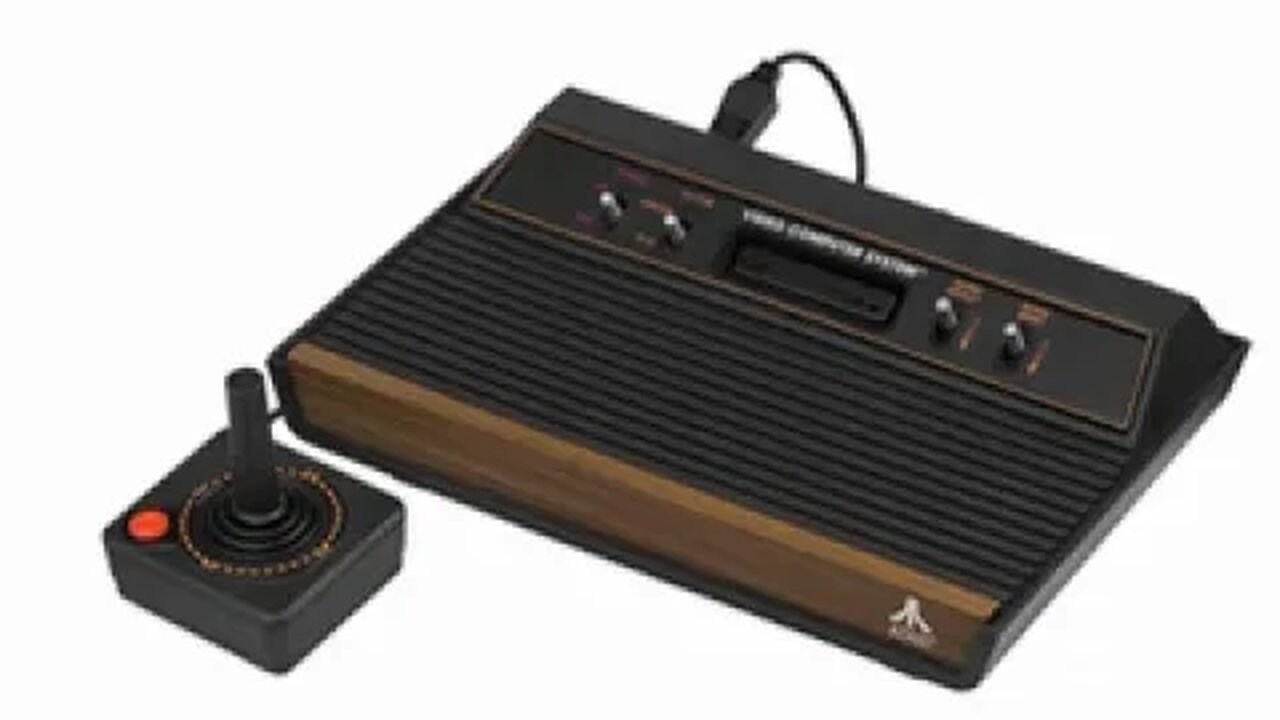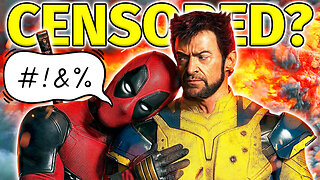Premium Only Content

EPISODE 68: ATARI 2600
Atari 2600
Four-switch VCS model (1980–1982)
Also known as Atari Video Computer System (prior to November 1982)
Manufacturer Atari, Inc.
Type Home video game console
Generation Second
Release date
NA: September 1977
EU: 1978
FRA: 1982
JP: October 1983 (Atari 2800)
Lifespan 1977–1992
Introductory price US$189.95 (equivalent to $920 in 2022)
Discontinued January 1, 1992[1]
Units sold 30 million (as of 2004)[2]
Media ROM cartridge
CPU 8-bit MOS Technology 6507 @ 1.19 MHz
Memory 128 bytes RAM
Graphics Television Interface Adaptor
Controller input JoystickpaddlesdrivingkeypadTrak-Ball
Best-selling game Pac-Man, 8 million (as of 1990)[a]
Predecessor Atari Home Pong
Atari Video Pinball
Successor Atari 5200
The Atari 2600 is a home video game console developed and produced by Atari, Inc. Released in September 1977, it popularized microprocessor-based hardware and games stored on swappable ROM cartridges, a format first used with the Fairchild Channel F in 1976. Branded as the Atari Video Computer System (Atari VCS) from its release until November 1982, the VCS was bundled with two joystick controllers, a conjoined pair of paddle controllers, and a game cartridge—initially Combat[3] and later Pac-Man.[4]
Atari was successful at creating arcade video games, but their development cost and limited lifespan drove CEO Nolan Bushnell to seek a programmable home system. The first inexpensive microprocessors from MOS Technology in late 1975 made this feasible. The console was prototyped as codename Stella by Atari subsidiary Cyan Engineering. Lacking funding to complete the project, Bushnell sold Atari to Warner Communications in 1976.
The Atari VCS launched in 1977 with nine simple, low-resolution games in 2 KB cartridges. The system's first killer app was the home conversion of Taito's arcade game Space Invaders in 1980. The VCS became widely successful, leading to the founding of Activision and other third-party game developers and to competition from console manufacturers Mattel and Coleco. By the end of its primary lifecycle in 1983–84, games for the 2600 were using more than four times the storage size of the launch games[5] with significantly more advanced visuals and gameplay than the system was designed for, such as Activision's Pitfall!
In 1982, the Atari 2600 was the dominant game system in North America. Amid competition from both new consoles and game developers, a number of poor decisions from Atari management affected the company and the industry as a whole. The most public was an extreme investment into licensed games for the 2600, including Pac-Man and E.T. the Extra-Terrestrial. Pac-Man became the system's biggest selling game, but the conversion's poor quality eroded consumer confidence in the console. E.T. was rushed to market for the holiday shopping season and was critically panned and a commercial failure. Both games, and a glut of third-party shovelware, were factors in ending Atari's relevance in the console market. Atari's downfall reverberated through the industry resulting in the video game crash of 1983.
Warner sold Atari's home division to former Commodore CEO Jack Tramiel in 1984. In 1986, the new Atari Corporation under Tramiel released a lower-cost version of the 2600 and the backward-compatible Atari 7800, but it was Nintendo that led the recovery of the industry with its 1985 launch of the Nintendo Entertainment System. Production of the Atari 2600 ended on January 1, 1992, with an estimated 30 million units sold across its lifetime.
-
 10:58
10:58
Degenerate Jay
22 hours ago $7.19 earnedThe Rejected Deadpool And Wolverine Joke That Was Too Far For Disney
86.2K5 -
 13:00
13:00
Dermatologist Dr. Dustin Portela
15 hours ago $3.38 earnedAnother Insurance Company Harming Patients - Doctor Explains
41K4 -
 52:32
52:32
Survive History
21 hours ago $5.57 earnedCould You Survive in King George's Redcoats During the Jacobite Rising?
34.3K5 -
 17:53
17:53
Fit'n Fire
20 hours ago $2.06 earnedA Rifle for the Family -- BCM MK2 BFH and Gunnr Optics Odin 1-10x28mm LPVO
24K2 -
 1:03:52
1:03:52
GrassRootsWarriorNetwork
1 month agoWe The People Are The News Now While MSM Is On It’s Way Out - YourNews.com with Sam Anthony
22.2K1 -
 21:12
21:12
DeVory Darkins
15 hours ago $19.45 earnedGavin Newsom gets what he deserves after NBC Reporter FACT CHECKS his Lies
96K68 -
 1:57:13
1:57:13
MyronGainesX
15 hours agoFormer Fed Explains Sting That Led To The Murder Of A State Trooper
100K22 -
 3:56:27
3:56:27
Due Dissidence
21 hours agoNewsom ROASTED For Pod Save Interview, Candace Owens CALLS OUT Elon, Ian Carroll RATIOES Israel Post
88.5K66 -
 2:16:17
2:16:17
TheSaltyCracker
13 hours agoLooters Descend on LA ReeEEeE Stream 01-12-25
168K356 -
 40:32
40:32
Man in America
18 hours agoRockefeller Medicine COLLAPSES as God's Natural Healing Takes Over w/ Angie Tomky
63.5K41